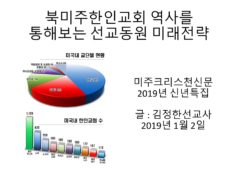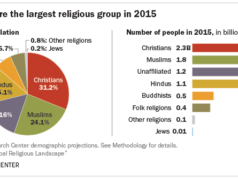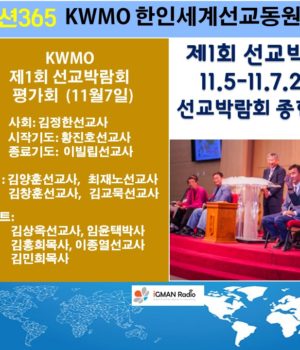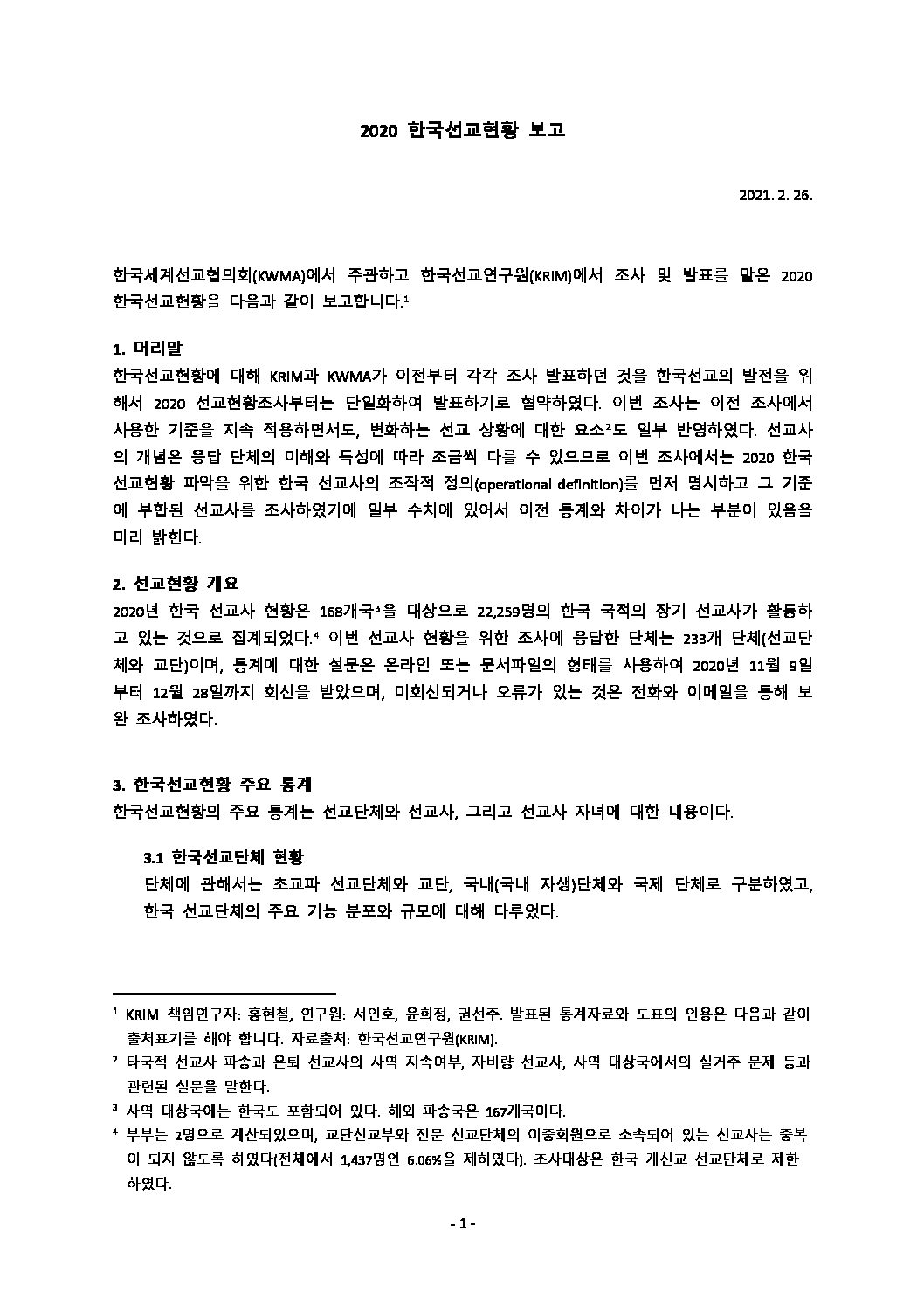Statistical Research on Stewardship
Comparisons to Hypotheses and Interviews
This discussion on Biblical Stewardship centers on a research analyses of three principle research organizations Barna research, World Christian Trends, and Annual Christian Megacensus and other pertinent information. We will also look at principle Evidences from statistical research showing postmodern mindsets emerging in the American Church in regards to Stewardship
The Church has Great Potential Resources of Wealth
- In 2000, American evangelicals collectively made $2.66 trillion in income. (David B. Barrett and Todd M. Johnson, World Christian Trends AD 30-AD 2000: Interpreting the Annual Christian Megacensus (Pasadena, Calif.: William Carey Library, 2001), 551.)
- Total Christian income in the United States is $5.2 trillion annually, nearly half of the world’s total Christian income. (David B. Barrett and Todd M. Johnson, World Christian Trends AD 30-AD 2000: Interpreting the Annual Christian Megacensus (Pasadena, Calif.: William Carey Library, 2001), 551.)
- Over the next 50 years, it is predicted that between $41 trillion and $136 trillion will pass from older Americans to younger generations, suggesting that roughly $1 trillion to $3 trillion in wealth will change hands every year. (John J. Havens and Paul G. Schervish, Why the $41 Trillion Wealth Transfer Estimate Is Still Valid: A Review of Challenges and Questions, The Journal of Gift Planning 7, no. 1 (January 2003), 11-15, 47-50.)
General Statistics on giving in American Churches
- 66% of all adults donated to a church or religious center during 1999.
- 17% of adults claim to tithe, while 3% actually do so.
- 16% of born again Christians gave no money to his or her church in 1999.
- 8% of those making $20,000 or less gave at least 10% of their income to churches, while 1% of those making $75,000-$99,999 gave a similar amount.
- 27% of people who do not attend church made no donations to nonprofits in 1999. (Source: Barna Research Group studies from 1997, 1999, and 2000)
The People in the Church are Squandering the Resources Given to Them
- The average donation by adults who attend U.S. Protestant churches is about $17 a week. (George Barna, How to Increase Giving in Your Church: A Practical Guide to the Sensitive Task of Raising Money for Your Church or Ministry (Ventura, Calif.: Regal Books, 1997), 20.)
- Among church members of 11 primary Protestant denominations (or their historical antecedents) in the United States and Canada, per-member giving as a percentage of income was lower in 2000 than in either 1921 or 1933. In 1921, per-member giving as a percentage of income was 2.9 percent. In 1933, at the depth of the Great Depression, per-member giving grew to 3.3 percent. By 2000, after a half-century of unprecedented prosperity, giving had fallen to 2.6 percent. (John L. Ronsvalle and Sylvia Ronsvalle, The State of Church Giving through 2000 (Champaign, Ill.: Empty Tomb, 2002), 40.)
- Generally, only 3 to 5 percent of Americans who donate money to a church tithe, that is give a tenth of their incomes, though many more claim to do so. (George Barna, How to Increase Giving in Your Church: A Practical Guide to the Sensitive Task of Raising Money for Your Church or Ministry (Ventura, Calif.: Regal Books, 1997), 20.)
- Thirty-three percent of U.S. born-again Christians say it is impossible for them to get ahead in life because of the financial debt they have incurred. (George Barna, Barna Research Archives: Money, Barna Research Group.)
Faith and Generosity Are Connected
- Among evangelicals in America, almost 90 cents of every donated dollar goes to their churches. The proportion drops in direct correlation to people’s spiritual intensity and commitment. As Christ’s eminence declines in their life so does the giving. (George Barna, quoted in Survey Finds Americans More Generous Last Year, press release by World Vision, July 22, 2002.)
- In 2001 American evangelicals gave a mean of $3,601 per capita to nonprofit organizations, which is high when compared to other demographic groups. (George Barna, Americans Were More Generous in 2001 Than in 2000, news release by Barna Research Group, April 9, 2002.)
- From 1968 to 2000, members of U.S. evangelical denominations gave larger dollar amounts and larger portions of income to their churches than did members of mainline Protestant denominations. (George Barna, Barna Research Archives: Money, Barna Research Group.)
- In 2001, American evangelicals gave four times as much, per person, to churches as did all other church donors in 2001. Eighty-eight percent of evangelicals and 73 percent of all Protestants donated to churches. (George Barna, Americans Were More Generous in 2001 Than in 2000, news release by Barna Research Group, April 9, 2002).
The Potential for Church and Ministry Funding
- If members of Christian churches in the United States had raised their giving to the Old Testament’s minimum standard of giving (10 percent of income) in 2000, an additional $139,000,000,000 a year would become available. (John L. Ronsvalle and Sylvia Ronsvalle, The State of Church Giving through 2000 (Champaign, Ill.: Empty Tomb, 2002), 40.)
- Eighty percent of the world’s evangelical wealth is in North America—and the total represents way more than enough to fund the fulfillment of the Great Commission. (Bill Bright, quoted in Ron Blue with Jodie Berndt, Generous Living: Finding Contentment through Giving (Grand Rapids, Mich.: Zondervan Publishing House, 1997), 201 and Larry Eskridge, Defining Evangelicalism (Wheaton, Ill.: Institute for the Study of American Evangelicals, n.d.)
Stewardship giving verses spiritual formation statistics
- Christian author, speaker, and financial counselor Larry Burkett 25 years of experience, tells us that, “the Christian world is no different from the secular world when it comes to debt, bankruptcy, and divorce because priorities are misplaced. Burkett goes on to say, “while the Bible does not condemn borrowing, it does lay out specific guidelines for Christians and debt. “God said very clearly [that] you can’t be unfaithful in a small thing and faithful in a large — they come part and parcel together,” Burkett says. “You can’t be a bad money handler and be handling other things well. Money is just the outside indicator of what’s going on in our lives spiritually.” According Burkett, the use of credit/stewardship is not a problem among Christians — instead, he says, it is the misuse of credit. Burkett says, “most Christians do not have a firm grasp on the biblical perspectives on debt or stewardship. His origination Crown Ministries conducted research with the results that, “Only 3% of Christians actually tithe today. Thirty-seven percent of those attending evangelical churches don’t give anything at all to their local church in any way. And that’s not a problem,” he says, “that’s an indicator of a problem. It’s a spiritual problem being reflected through their finances.” Burkett cites surprising statistics to prove his point. “Over the last decade, giving overall in Christianity has increased about 20% — but recreational spending increased almost 125% and debt spending increased 550%,” Burkett says. “I think it’s really time that God’s people decided [that] God really does want us to live by a different set of rules.” Burkett further says, “there are several steps to becoming good stewards, among them transfer ownership of everything to God, tithe on gross income, allow no more debt, develop a realistic balanced budget, and start retiring existing debt. (quotes taken from Crown Financial Ministries http://www.crown.orgwebsite and article, Qualities of a Generous Giver periodical Generous Giving, 2002 by Gordon MacDonald)
- Stewardship Issues in the Presbyterian Church USA from, “The Third Survey of Racial-Ethnic Members of the Presbyterian Church” by the Lilly Endowment, Inc. and the Louisville Institute, the Presbyterian Church USA conducted a systematic study of racial-ethnic members in stewardship. Thir findings: “Most racial-ethnic members reported that they (or someone in their family) filled out a pledge card or commitment card regarding church giving in the previous year (80% of African Americans, 81% of Hispanics, and 66% of Koreans reported that they did so). Two other questions focused on members’ views of stewardship (see Table 2). Although majorities in all three samples agreed with each statement, Korean members were more likely than African-American or Hispanic members to agree (either “strongly agree,” “agree,” or “tend to agree”).” (http://www.pcusa.org/research/reports/resumm3.htm).
| Table: Views of Stewardship (percent who agree) | African Americans | Hispanics | Koreans |
| The primary focus of Christian stewardship should be on the individual’s financial support of the mission of the church through the congregation | 66% | 77% | 90% |
| As Christian stewards we are called to work toward the protection of the earth and its resources | 85% | 88% | 98% |
Secondary Research that Corresponds
“The line at the back of this chart shows per capita, or per person, income, a measure that takes into account changes in household size over this period. We’re also looking at disposable personal income, or income after taxes, in inflation-adjusted dollars.
Income was going up in the 1920s. Then there was the drop during the Great Depression, followed by an artificial high in World War II. Since about 1950, a new phenomenon occurred. For the first time in history in some societies, including the U.S., the majority of people now had more money than was needed for basic needs, and the poor became a minority.
Giving has not kept up with income, however. Protestant denominations have published data on an ongoing basis throughout the century. In 1916, Protestants were giving 2.9% of their incomes to their churches. In 1933, the depth of the Great Depression, it was 3.2%. In 1955, just after affluence began spreading through our culture, it was still 3.2%. By 2002, when Americans were over 480% richer, after taxes and inflation, than in the Great Depression, Protestants were giving 2.6% of their incomes to their churches.
| Poll taken on a website whose purpose is stewardship – What percentage of your income do you give as offerings? | ||||||||||||||||||
|
| Poll Statistics – What percentage of your income do you give as offerings? | ||||
|
Both income and giving were going up in the 1920s. Giving was routinely above 3% during this period through 1933. Giving as a portion of income fell below 3% in 1934 and was low through World War II. Then both giving and incomes recovered after World War II. Giving as a portion of income rose to above 3% from 1958 and stayed there through 1962, when it began a prolonged decline. The decline in giving as a percentage of income that began in the 1960′s is not like the decline that began in 1934. The Great Depression and World War II help to explain the downturn in giving in the mid-1930s. No such national disasters help to explain the decline in giving since the 1960s.” (The State of Church Giving through 2002 Sylvia Ronsvalle empty tomb, inc. http://www.emptytomb.org/research.php).
“Figure 2 presents 1968-2002 per member giving as a percentage of income for the composite denominations. Total Contributions, Congregational Finances and Benevolences all declined during this 35-year period as a percent of income. Total Contributions declined from 3.11% of income in 1968 to 2.62% in 2002. Congregational Finances declined from 2.45% in 1968 to 2.23% in 2002, a percent change of 9% from the 1968 base in giving as a percentage of income. In the year 2002, however, Giving as a portion of income to Congregational Finances had recovered to early-1970s levels. Benevolences declined from 0.66% of income in 1968 to 0.38% in 2002, a decline of 41% as a portion of income. In 2000, Giving as aportion of income to Benevolences was at the lowest point in the 1968-2002 period, increasing only slightly in 2001.
However, during the same 34-year interval, U.S. population increased from 200,745,000 to 288,240,000, an increase of 44%. Therefore, while this church member grouping represented 14.1% of the U.S. population in 1968, it included 10.7% in 2002, a decline of 24% from the 1968 base.” (The State of Church Giving through 2002 Sylvia Ronsvalle empty tomb, inc. http://www.emptytomb.org/research.php).
“Catholic” giving of time and treasures statistics
TIME
| 50 Hours | Working |
| 45 Hours | Sleeping |
| 15 Hours | Eating |
| 12 Hours | Watching Television |
| 6 Hours | Socializing |
| 5 Hours | Shopping |
| 4 Hours | Watching Movies, Reading |
| 3 Hours | Hobbies |
| 2 Hours | Sports/Exercise |
| 1 Hour | Religious or Volunteer Activities |
| BY AGE 50, THE AVERAGE AMERICAN WILL HAVE SPENT 11 YEARS IN FRONT OF THE TELEVISION |
TREASURE
| 44 Billion | Soft Drinks |
| 35 Billion | Sports |
| 29 Billion | Diets |
| 12 Billion | Candy |
| 8 Billion | Pets |
| 5.5 Billion | Video Games |
| 3.4 Billion | Cut Flowers |
| 2.7 Billion | Skin Care |
| 1.7 Billion | Religious |
(From catholic-doc.org/stewardship/stats; U.S. Center for World Mission, Global Missions Statistics, 2001 A.D..)
Americans
- In 2001, U.S. households that were asked to give were highly likely to do so. Of the 56 percent of households that reported being asked to give, nearly all (95 percent) made a gift when asked. (AAFRC Trust for Philanthropy, Giving USA 2002: The Annual Report on Philanthropy for the Year 2001, researched and written at the Center on Philanthropy at Indiana University (Indianapolis: Author, 2002), 59.)
- On average, an American household with a salary of $93,975 and an investment asset of $462,275 gave $3,156 to charity in 2000—but had the potential to donate up to $4,500 without any change in standard of living. (New Tithing Group, Affordable Donations, San Francisco: Author, 2002.)
- On average, an American household with a salary of $166,068 with an investment asset of $1,458,420 gave $7,558 to charity in 2000—but had the potential to donate up to $21,000 without any change in standard of living. (NewTithing Group, Affordable Donations, San Francisco: Author, 2002.)
- In 1994, Americans donated $2 billion, but had the capacity to donate $100 billion more. (Ron Blue with Jodie Berndt, Generous Living: Finding Contentment Through Giving (Grand Rapids, Mich.: Zondervan Publishing House, 1997), 201.)
American Churchgoers
- If members of historically Christian churches in the United States had raised their giving to the Old Testament’s minimum standard of giving (10 percent of income) in 2000, an additional $139,000,000,000 a year would become available. (John L. Ronsvalle and Sylvia Ronsvalle, The State of Church Giving through 2000 (Champaign, Ill.: Empty Tomb, 2002), 51.) Also consulted: Ron Blue with Jodie Berndt, Generous Living: Finding Contentment Through Giving (Grand Rapids, Mich.: Zondervan Publishing House, 1997), 201.
- Two out of three senior pastors of Protestant churches believe that their churches are not living up to their giving potential. (George Barna, How to Increase Giving in Your Church: A Practical Guide to the Sensitive Task of Raising Money for Your Church or Ministry (Ventura, Calif.: Regal Books, 1997), 20).
- In 1994, 64 percent of the pastors of Protestant churches contended that their congregations were donating less money than the amount they could reasonably be expected to contribute; 30 percent said their congregations were giving what would be expected; and 4 percent believed their congregations were giving beyond what might reasonably be expected from such a congregation. (George Barna, Barna Research Archives: Stewardship (Barna Research Group).
- Generally, pastors are reluctant to use the word “money”.Many pastors feel they are irrelevant to the financial process and that money is not a core spiritual value.Eighty-five percent of pastors are untrained in the theology of stewardship and have no books in their libraries on Christian stewardship, money or giving. (Christian Stewardship Association, quoted in Holly Hall, Raising Funds by the Good Book: Churches Use Financial Lessons from the Bible and See Gifts Rise,)
- In 1994, four out of 10 Protestant churches (39 percent) asked people for a financial pledge, or an estimated amount of money that they would donate to the church over the course of the following year. These same pastors estimated that, on average, about 60 percent of their congregants actually made pledges. (George Barna, Barna Research Archives: Stewardship (Barna Research Group).
- Local congregations—not their parent church bodies or church-related organizations—are 10 to 15 years behind even the smaller charities in America in introducing the benefits of charitable gift planning to their members. (John L. Ronsvalle and Sylvia Ronsvalle, The State of Church Giving through 2000 (Champaign, Ill.: Empty Tomb, 2002), 51).
- Ninety percent of churches have no stewardship plan. When a church does not meet its budget for three to four consecutive years, budget credibility is negated and people do not participate in the vision. Sixty percent in marriage counseling identify money as a major problem. Eighty-two percent of church members will increase their giving, if asked. Only 2 to 4 percent of seminaries and only 1 to 2 percent of Christian colleges and universities teach biblical financial principles at all. (Christian Stewardship Association, quoted in Holly Hall, Raising Funds by the Good Book: Churches Use Financial Lessons from the Bible and See Gifts Rise.)
- Between 75 and 90 percent of Christian leaders and professional staff of Christian ministries say that they have never been professionally or biblically equipped to raise funds for ministry. (The United Methodist Foundation of Los Angeles, Money and Religion, rpt. in Lifestyle Stewardship: Learning the Freedom of Generous Giving, Alliance Life (January 2001), 13. ; David G. Schmeling, Planned Giving Awareness in the Local Church, Planned Giving Today, February 1998; The Chronicle of Philanthropy, June 17, 1999; Brian Kluth, The State of Stewardship in the Church, sermon preached at the annual Generous Giving Conference, Atlanta, Ga., January 14-15, 1999.)
- Among church members of 11 primary Protestant denominations (or their historical antecedents) in the United States and Canada, per-member giving as a percentage of income was lower in 2000 than in either 1921 or 1933. In 1921, per-member giving as a percentage of income was 2.9 percent. In 1933, at the depth of the Great Depression, per-member giving grew to 3.3 percent. By 2000, after a half-century of unprecedented prosperity, giving had fallen to 2.6 percent. (John L. Ronsvalle and Sylvia Ronsvalle, The State of Church Giving through 2000 (Champaign, Ill.: Empty Tomb, 2002), 41.)
- Overall, only 3 to 5 percent of Americans who donate money to a church tithe (give a tenth of) their incomes though many more claim to do so. (George Barna, How to Increase Giving in Your Church: A Practical Guide to the Sensitive Task of Raising Money for Your Church or Ministry (Ventura, Calif.: Regal Books, 1997), 20.)
- Only one-third to one-half of U.S. church members financially support their churches. (Eric Reed, Where the Money Goes: How Normal Are Your Church’s Budget, Debt, and Salary Levels?, Leadership Journal, Summer 2000; also consulted: George Barna, Barna Research Archives: Stewardship (Barna Research Group)..)
- Forty percent of church members say they overspend monthly; also, 40 percent of church members pay more than $2,000 a year in interest in addition to their mortgage. (The United Methodist Foundation of Los Angeles, Money and Religion, rpt. inLifestyle Stewardship: Learning the Freedom of Generous Giving, Alliance Life (January 2001), 13.)
- In 1996, 37 percent of churchgoing Americans did not give any money to the church. (George Barna, Barna Research Archives: Stewardship (Barna Research Group).
- About 80 million families in the United States would say that they are in financial trouble, after 50 years of almost unparalleled prosperity. (Ron Blue, How Much Is Enough?, speech delivered at the annual Generous Giving Conference, Phoenix, Ariz., March 1-3, 2001.)
- Thirty-three percent of U.S. born-again Christians say it is impossible for them to get ahead in life because of the financial debt they have incurred. George Barna, Barna Research Archives: Money, Barna Research Group.)
- More volunteers (34 percent) focused their activities on religious organizations than on any other group. This was followed by volunteers performing activities mainly for educational/youth-service groups (27 percent), social or community service organizations (12 percent), and hospitals or health organizations (9 percent). These numbers apply for the period between September 2001 and September 2002. (George Barna, Barna Research Archives: Stewardship (Barna Research Group).
- In 2000, 12 percent of all born-again adults tithed. The percentage rose to 14 percent in 2001, but dropped to 6 percent in 2002. (David B. Barrett and Todd M. Johnson, World Christian Trends AD 30-AD 2000: Interpreting the Annual Christian Megacensus (Pasadena, Calif.: William Carey Library, 2001), 656.)
- Worldwide, only 32 percent of church members can be classified as Great Commission Christians: “Believers in Jesus Christ who are aware of the implications of Christ’s Great Commission, who have accepted its personal challenge in their lives and ministries, are attempting to obey his commands and mandates, and who are seeking to influence the body of Christ to implement it.” (George Barna, The State of the Church: 2002 (Ventura, Calif.: Issachar Resources, 2002), 114)
- People who try to separate themselves from religion do not acknowledge any supernatural motivation or obligation to give. Still, many factors motivate them toward philanthropic work, including tax savings, relief from personal guilt and humanistic social action. U.S. industrialist Andrew Carnegie is an example of someone whose generosity was motivated by humanistic social action. He argued that wealthy people should give to promote the progress of society and minimize the gap between the rich and the poor. (Independent Sector, Faith and Philanthropy: The Connection Between Charitable Behavior and Giving to Religion, Giving and Volunteering in the United States Series (Washington: Author, 2002), 11.)
- Others give out of a desire to gain fame and notoriety, contradicting Jesus’ teaching about giving unostentatiously. On the other hand, some are known for discouraging philanthropy, based on certain political, social and economic views. These people believe that “philanthropy undercuts the will to work and vitiates the necessity for each person to stand on his or her own feet.” Further, some believe that “human nature at its core makes philanthropy illusory, as Freud believed religion to be; philanthropy is an example of what in Marxist terms is called ‘false consciousness,’ an ideological sleight-of-hand that tries to put a benevolent face on an exploitative system.” Andrew Carnegie, The Gospel of Wealth, originally titled “Wealth,” North American Review 148, no. 391 (June 1989).
- Households that give to both religious congregations and secular organizations give over three times ($2,247) more than do households that give to only secular organizations ($623).1 U.S. religious observers (only 38 percent of all Americans) give two-thirds of all charitable dollars in the nation. Religious observers (those who attend weekly services) give 3.4 percent of their income annually, while nonreligious people give between 1.1 and 1.4 percent.2 The average annual giving among the religious is $2,210, whereas among the secular it is $642. (Arthur C. Brooks, Religious Faith and Charitable Giving, Policy Review, no. 21 (October/November 2003).
Also consulted for these statistics
- AAFRC Trust for Philanthropy, Giving USA 2002: The Annual Report on Philanthropy for the Year 2001, researched and written at the Center on Philanthropy at Indiana University (Indianapolis: Author, 2002), 102
- George Barna, Tithing Down 62% in the Past Year, news release by Barna Research Group, May 19, 2003.
- Barna, How to Increase Giving in Your Church, 20; U.S. Department of Labor, Bureau of Labor Statistics, Volunteering in the United States, news release, December 18, 2002.
- David B. Barrett and Todd M. Johnson, World Christian Trends AD 30-AD 2000: Interpreting the Annual Christian Megacensus (Pasadena, Calif.: William Carey Library, 2001), 39, 551.
- Bill Bright, quoted in Ron Blue with Jodie Berndt, Generous Living: Finding Contentment Through Giving (Grand Rapids, Mich.: Zondervan Publishing House, 1997), 201.
- Robert L. Payton, Philanthropy: Voluntary Action for the Public Good (New York: Macmillan, 1988), 89-101.
- Tim Stafford, The Anatomy of a Giver: American Christians Are the Nation’s Most Generous Givers, but We Aren’t Exactly Sacrificing, Christianity Today, May 19, 1997.
- George Barna, Evangelicals Are the Most Generous Givers, But Fewer than 10 Percent of Born Again Christians Give 10 Percent to Their Church, news release by Barna Research Group, April 5, 2000.
- James Prichard, Philanthropy Growing among People of Color, The Detroit News, January 13, 2001.
- Jacinthia Jones, Charities, Churches, Causes Benefit from Generosity, The Commercial Appeal, Memphis, Tenn., May 29, 2003.
- The Gallup Organization.
As compared to the Muslim world:
The third of five pillars of Islam requires Muslims to give the zakah, an annual alms tax of 2.5 percent of their net worth. Sadaqah, or charity beyond the zakah, is also encouraged. Muslims do have an overall spiritual commitment to giving as it is one of the five pillars of Islam. Most branches or schools of Islam teach that some level of giving is necessary for salvation, ranging between 2 and 20 percent of annual income. But like many other aspects of Islam, there is great social pressure surrounding the practice giving so that giving may sometimes be less about piety than it is about fulfilling an social obligation to one’s community. Giving zakah and sadaqah also is a way of purifying one’s possessions and attaining righteousness, as well as making provision for the poor. The world has over 1.2 billion Muslims. In 2001, Islamic charities in the United States raised $70 million.14 Annual income for U.S. Muslims is estimated at $1.5 billion. If American Muslims paid sadaqah at the average rate that most Americans give to charity, in addition to paying zakah, they would give $1.03 billion (The Lahore Ahmadiyya Movement, Charity.;The Five Pillars of Islam, from The Religion of Islam; The Quran 9:71, 9:103, 9:60, 3:92, 73:20; U.S. Center for World Mission, Global Missions Statistics, 2001 A.D.)
As compared to the Mormon world:
Often mistaken for a Christian denomination, the Mormon religious movement expects its members to pay a tithe (10 percent) of their incomes to build up and support the work of the church. Tithing is not so much a matter of dollars as it is a matter of faith. It becomes a privilege and an opportunity, not a burden. Utah, which is over 70 percent Mormon, is the U.S. state with the highest proportion of charitable giving from the wealthy (households with annual gross income of more than $200,000). The IRS reported, “Of the 9,800 Utah filers with adjusted gross incomes of more than $200,000, donations per filer stood at $42,000. Their average assets were $3.2 million.” In 1987-89, Mormons gave almost 7.5 percent of their incomes. (King James Version of Malachi 3:10; The Doctrines and Covenants of the Mormon Church; Behind Zion Curtain, Statistics Comparing Utah with the U.S. General Population, n.d.; Kent Allen, Philanthropy: Give and Take: Individual Potential in Relative Terms, The Washington Post, January 3, 1999, A-17; quoted in Sampling of Latter-Day Saint/Utah Demographics and Social Statistics from National Sources, 2002.; Charles E. Zech, Why Catholics Don’t Give … and What Can Be Done about It (Huntington, Ind.: Our Sunday Visitor, 2000), 12.)
As compared to the Unitarian-Universalism world:
Giving is encouraged in this liberal Enlightenment-era religious movement but is not compulsory. Giving is guided by the conscience and reason of the individual. Giving to other people empowers them and provides the donor with the opportunity to find meaning by affecting the future through generosity. From 2002 to 2003, congregations of the Unitarian Universalist Association gave $5,731,096 to their Annual Program Fund. Ten individuals gave over $5,000 each. Over 100 individuals gave between $1,000 and $4,999. The mean percentage of income given for Unitarian-Universalists was under 1 percent, the lowest amount among 23 other religious groups and denominations in America. (Stewardship: the Joy of Giving: Stewardship for Adults education curriculum; Unitarian Universalist Association, Unitarian Universalist Association Statistical Summary (Boston: Author, 2003). Unitarian Universalist Association, Unitarian Universalist Association of Congregations Report on Giving 2002-2003 (Boston: Author, 2003).
As compared to the Roman Catholic Church world:
In this, the largest Christian denomination in the world, the Old Testament tithe is seen as God’s means for providing for the poor. The tithe was not negated by Jesus but, rather, made clearer. The motives for giving to the poor should be the opportunity of serving Jesus Himself. Giving to the poor is a work of both justice and mercy that pleases God. Pope John Paul II reminded Christians that the care of the poor is theirs: “The Son of God loved us first, while ‘we were yet sinners’ (Romans 5:6), with an unconditional love which asks nothing in return. If this is so, how can we fail to see the season of Lent as a providential opportunity to make courageous decisions inspired by altruism and generosity? Lent offers us the practical and effective weapons of fasting and almsgiving as a means of combating an excessive attachment to money. Giving not only from our abundance, but sacrificing something more in order to give to the needy, fosters that self-denial which is essential to authentic Christian living. In 1987, the Catholic per-capita giving rate was $96. In 1991, Catholic giving totaled $5.48 billion. In 1995, the Roman Catholic Church reported 59 million members. By 2000, this number had grown to 62.4 million members. About 1.25 percent in 1987-89; 1.2 percent in 1993;.Lisa A. Keister, Religion and Wealth: The Role of Religious Affiliation and Participation in Early Adult Asset Accumulation, Social Forces 82, no. 1 (September 2003); U.S. Center for World Mission, Global Missions Statistics, 2001 A.D.Stephen Klick, Dharma Teachers, excerpt from A House on Fire (Kansas City: BIONA Books, n.d.). David B. Barrett and Todd M. Johnson, World Christian Trends AD 30-AD 2000: Interpreting the Annual Christian Megacensus (Pasadena, Calif.: William Carey Library, 2001), 362; Catechism of the Catholic Church)
Also consulted for this chapter:
· U.S. Center for World Mission, Global Missions Statistics, 2001 A.D.
· John L. Ronsvalle and Sylvia Ronsvalle, The State of Church Giving through 2000, 12th ed. (Champaign, Ill.: Empty Tomb, 2002), 126.
· Charles E. Zech, Why Catholics Don’t Give … and What Can Be Done about It (Huntington, Ind.: Our Sunday Visitor, 2000), 13.
· Mary J. Oates, The Catholic Philanthropic Tradition in America (Bloomington and Indianapolis: Indiana University Press, 1995), 166.
· Benevolences Up, Membership Stable, 2001 Yearbook Reports, press release by the National Council of Churches, February 16, 2000.
· Dean Hoge, Charles Zech, Patrick McNamara and Michael Donahue, American Congregational Giving Study, report commissioned by the Lilly Endowment, 1993.
· Stewardship in the 21st Century, Luther Seminary.
· Dean R. Hoge, Charles Zech, Patrick McNamara and Michael J. Donahue, Money Matters: Personal Giving in American Churches (Louisville, Ky.: Westminster John Knox Press, 1996), 86.
· John L. Ronsvalle and Sylvia Ronsvalle, The State of Church Giving through 2000, 12th ed. (Champaign, Ill.: Empty Tomb, 2002), 126.
















